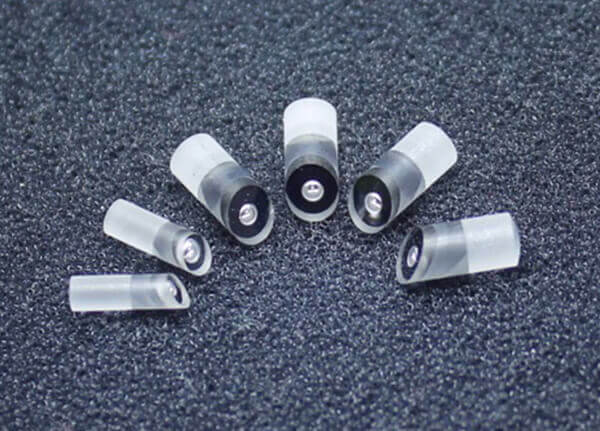欢迎来到匠仁医疗设备有限公司网站!

内窥镜维修设备长期使用后,性能下降、部件老化等问题频发,通过科学翻新可使其重获新生。从拆解检测到功能复原,每个环节都需专业操作,方能让设备恢复精准高效的工作状态。
After long-term use, problems such as performance degradation and component aging occur frequently in endoscopic maintenance equipment. Scientific refurbishment can help it regain its vitality. From disassembly and testing to functional restoration, each step requires professional operation to restore the equipment to a precise and efficient working state.
翻新前,需对设备进行全面诊断。用专业工具检查设备外观,查看是否存在外壳破损、显示屏划痕;测试核心功能,如镜头的清晰度、光源的亮度、操控杆的灵敏度,记录设备各项参数与故障点。对于光学部件,用显微镜观察镜片是否有霉斑、划痕,检测图像传导是否存在失真、模糊现象,这些细致检查能为后续翻新提供准确方向。
Before renovation, a comprehensive diagnosis of the equipment is required. Use professional tools to inspect the appearance of the equipment and check for any damage to the casing or scratches on the display screen; Test core functions such as lens clarity, light source brightness, joystick sensitivity, and record equipment parameters and fault points. For optical components, using a microscope to observe whether there are mold spots or scratches on the lenses, and detecting whether there is distortion or blurring in image transmission, these detailed inspections can provide accurate directions for subsequent refurbishment.
拆解环节要遵循规范流程。准备防静电工作台与专用拆卸工具,先断开电源,依次拆卸外壳、电路板、光学组件等。对拆卸下来的部件进行编号、分类存放,防止组装时混淆。同时,拍摄拆解过程的照片或视频,记录各部件安装位置与连接方式,为后续组装提供参考。尤其要注意,部分精密部件(如微型传感器、光纤束)极为脆弱,拆卸时需小心谨慎,避免造成二次损坏。
The dismantling process should follow standardized procedures. Prepare an anti-static workbench and specialized disassembly tools, disconnect the power supply first, and then disassemble the casing, circuit board, optical components, etc. in sequence. Number and classify the disassembled components for storage to prevent confusion during assembly. At the same time, take photos or videos of the disassembly process, record the installation positions and connection methods of each component, and provide reference for subsequent assembly. Special attention should be paid to the fact that some precision components (such as microsensors and fiber bundles) are extremely fragile, and caution should be taken when disassembling to avoid causing secondary damage.

部件清洁是翻新的重要步骤。对于金属外壳,使用温和的清洁剂配合软布擦拭,去除表面污渍、锈迹,若锈蚀严重,可用细砂纸轻轻打磨,之后喷涂防锈漆。光学镜片需用专用的光学清洁剂和无尘布,沿同一方向擦拭,去除灰尘、指纹和霉斑;电路板则用无水酒精清理,去除灰尘和氧化层,确保电路畅通。清洁完成后,对部件进行干燥处理,避免残留水分导致部件损坏。
Component cleaning is an important step in refurbishment. For metal shells, use a mild cleaning agent combined with a soft cloth to wipe off surface stains and rust. If the rust is severe, use fine sandpaper to gently polish and then spray anti rust paint. Optical lenses require specialized optical cleaning agents and dust-free cloths to be wiped in the same direction to remove dust, fingerprints, and mold; The circuit board is cleaned with anhydrous alcohol to remove dust and oxide layers, ensuring smooth circuit operation. After cleaning, dry the components to prevent residual moisture from causing damage.
修复与更换受损部件直接影响设备性能恢复。针对有划痕的镜片,若损伤较轻,可采用抛光技术进行修复;损伤严重则需更换新镜片。对于老化的电路板元件,如电容、电阻等,使用电烙铁进行焊接更换;磨损的操控杆、密封胶圈等机械部件,按原规格替换。更换部件时,确保新部件与原设备兼容,安装过程中注意安装精度,如镜头的对焦校准、光源的位置调整等,保证设备性能达到使用标准。
Repairing and replacing damaged components directly affect the recovery of equipment performance. For lenses with scratches, if the damage is minor, polishing technology can be used for repair; If the damage is severe, new lenses need to be replaced. For aging circuit board components such as capacitors, resistors, etc., use an electric soldering iron to solder and replace them; Replace worn mechanical components such as control levers and sealing gaskets with their original specifications. When replacing components, ensure that the new components are compatible with the original equipment, and pay attention to installation accuracy during the installation process, such as lens focus calibration, light source position adjustment, etc., to ensure that the equipment performance meets the usage standards.
组装与调试是翻新的收尾关键。按照拆解的反向顺序,将清洁、修复或更换后的部件依次安装回原位,确保各部件连接牢固,螺丝拧紧程度适中,避免过紧损坏部件或过松导致设备运行不稳定。组装完成后,进行通电测试,检查设备各项功能是否正常,如镜头成像是否清晰、光源亮度是否达标、操控是否灵敏等。对存在的问题及时调整,反复测试,直至设备性能完全恢复,达到或接近全新设备的标准。
Assembly and debugging are the key to the end of refurbishment. Install the cleaned, repaired, or replaced components back in their original positions in reverse order of disassembly, ensuring that each component is securely connected and the screws are tightened appropriately to avoid damaging the components due to over tightening or causing unstable equipment operation due to over loosening. After assembly, conduct a power on test to check whether the various functions of the equipment are normal, such as whether the lens imaging is clear, whether the light source brightness meets the standard, and whether the control is sensitive. Timely adjust existing problems, repeatedly test until the equipment performance is fully restored and meets or approaches the standards of a brand new device.
本文由内窥镜设备维修友情奉献.更多有关的知识请点击:http://www.jiangrenyiliao.cn我们将会对您提出的疑问进行详细的解答,欢迎您登录网站留言.
This article is a friendly contribution from the maintenance of endoscopic equipment For more information, please click: http://www.jiangrenyiliao.cn We will provide detailed answers to your questions. You are welcome to log in to our website and leave a message
 公司:匠仁医疗设备有限公司
公司:匠仁医疗设备有限公司 樊经理:13153199508 李经理:13873135765
公司地址:山东省济南市槐荫区美里东路3000号德迈国际信息产业园6号楼101-2室 湖南省长沙市雨花区劳动东路820号恒大绿洲14栋2409室
备案号:鲁ICP备2023027194号-1 鲁公网安备 37010402441281号